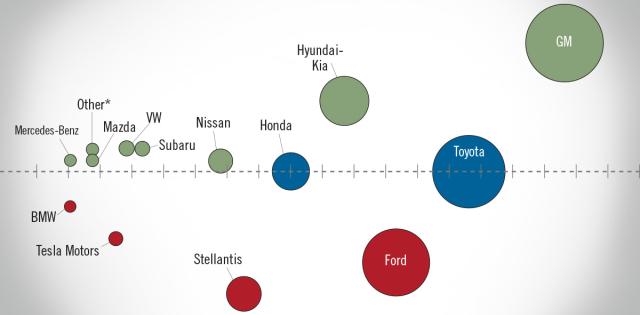Through November, U.S. light-vehicle sales were up 0.2%. Compared to this time last year, car segments continued to lose market share, down 4.8 percentage points, while their light-truck counterparts were up 3.8 percentage points. The red-hot, cross-utility segment claimed most of that lost market share, posting a gain of 3.8 percentage points.
Consumer demand for cars continues to fall, and manufacturers have responded by reducing the number of car models in their line-ups. Next year, look for more car models to be discontinued, with manufacturers adding new crossover, pickup and SUV models to cater to consumer tastes.
Given strong vehicle sales in November, it seems likely at least 17 million units will be sold for the fourth straight year. But we do expect sales to continue slowing in 2019, now that pent-up demand from the recession has been satisfied and rising transaction prices and interest rates are placing added pressure on new-vehicle affordability. We remain concerned about tariffs on imported vehicles, which would lead to higher prices and lower new-vehicle sales. One bright spot: During the recent G20 summit last month, there was a tentative deal to lower auto tariffs between the U.S. and China—which, if implemented, should boost U.S. light-vehicle exports and allow for more models produced in China to be sold here.











